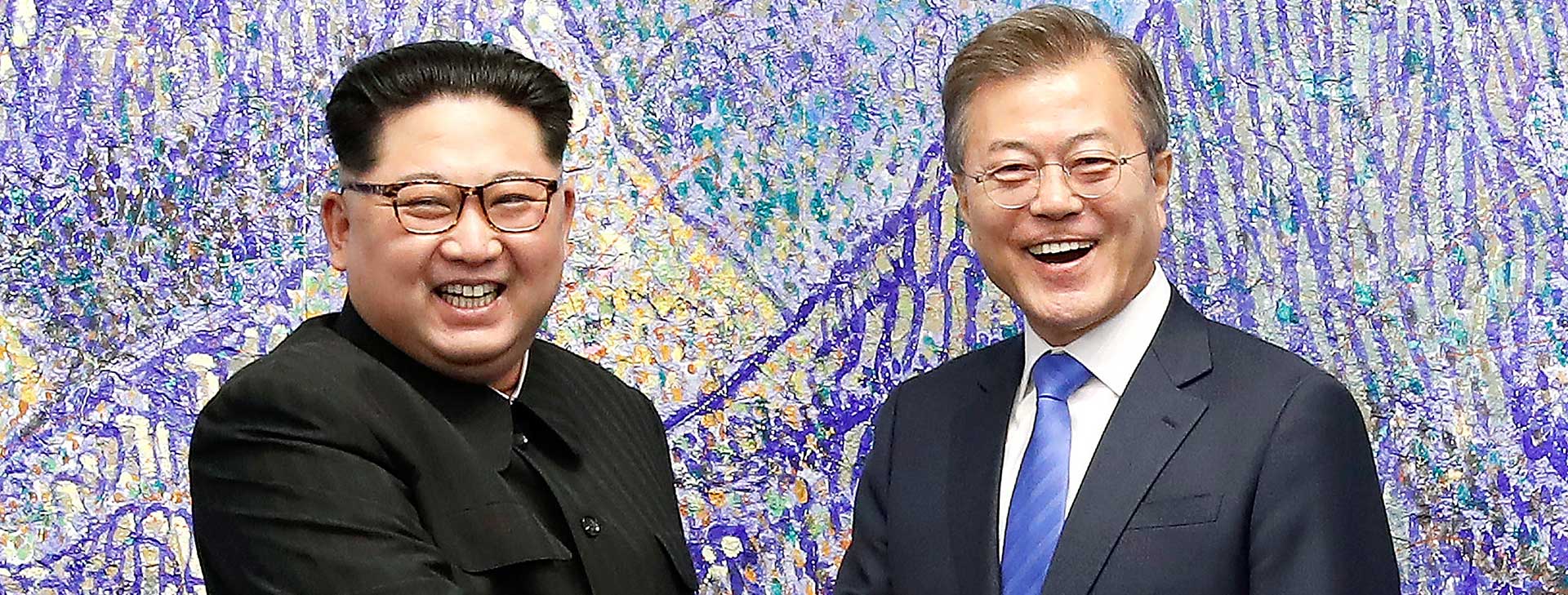
Peace in Korea? What You Need to Know about the Koreas Summit and the Trump-Kim Summit
Question 1: What was accomplished in this summit compared to the past? Is this truly a historic meeting?
Answer 1: This meeting is historic in its timing in two ways. First, the summit represents an aggressive attempt at diplomacy, engineered primarily by South Korea, to avoid the collision course that the United States and North Korea appeared to be on until the end of 2017, with 20 ballistic missile tests by North Korea and threats by the Trump administration to rain “fire and fury” on North Korea. The inter-Korean summit, and the upcoming North Korea–U.S. summit, have cooled tensions considerably, but for how long is uncertain.
The inter-Korean summit is an integral piece in a network of summits and high-level diplomacy springing up across the region. While the North Korea–China summit in March 25–28 and North Korea–Russia foreign ministers’ meetings in Moscow on April 10, and the Japan-U.S. summit at Mar-a-Lago last week (April 17–18) were all arguably prompted by President Trump’s surprise decision to meet with Kim Jong-un, the inter-Korean summit constitutes an important midway point and the most significant indicator thus far of whether the Trump-Kim summit should be approached with optimism or pessimism. In this sense, while past inter-Korean summits had operated in a vacuum, unconnected to broader geostrategic currents in the region, this one holds broader regional significance.
In terms of substance, the 2018 inter-Korean summit probably earns an “A” on optics and atmospherics and a “B+” (i.e., better than average) on substance. There were two previous summits (Kim Dae-jung/Kim Jong-il in 2000 and Roh Moo-hyun/Kim Jong-il in 2007); moreover, there have been five inter-Korean high-level joint statements (1972, 1992, 2000, 2007, 2018). Three consistent and key themes echoed in those agreements and reaffirmed in 2018 are: (1) the aspiration for peaceful reunification through the independent efforts of Koreans and without external influence or intervention; (2) modalities for building trust and reducing mutual misunderstanding; and (3) recognition of the need to turn the armistice on the peninsula into a peace treaty. Previous agreements (particularly 2007) had more specific statements about economic cooperation (Kaesong Industrial Complex, railways, shipbuilding, and tourism), but these were harder to elucidate formally in 2018 because of the heavy UN sanctions regime in place that is restricting nearly 100 percent of North Korea’s trade today.
Question 2: What will happen next?
Answer 2: South Korean president Moon Jae-in will likely have calls with other capitals following his meetings with Kim Jong-un. Regional discussions of the implications of the summit will take place on May 9 when the leaders of Japan, China, and South Korea will gather in Tokyo for the first trilateral summit meeting since 2015. It is likely that Moon will visit Washington, after marking the one-year anniversary of his government’s election on May 10, to personally brief President Trump on his meetings with Kim.
Question 3: What is the significance of the inter-Korean agreements?
Answer 3: Despite the positive atmospherics of the meeting, what is missing from this summit is any clearer indication of where Kim stands on denuclearization and whether he is willing to give his nuclear weapons up this time, or whether he is interested in temporarily “renting out” a freeze in return for sanctions relief, interim energy assistance, and reduced pressure.
Question 4: What takeaways might President Trump have gained from the Moon-Kim meeting?
Answer 4:
1) His North Korean interlocutor likes to carry a conversation and take long walks.
2) Kim Jong-un values international validation, as evidenced by this recent turn to the outside world from North Korea’s normal hermit-like, inward focus. In this regard, Kim probably values the upcoming meeting and photo op as much, if not more, than President Trump.
3) North Korea and South Korea may view tension reduction and proclamations of peace on the peninsula as a crisis-avoidance measure and to tie the hands of U.S. hawks who might want to consider military actions against North Korea. In this regard, the United States’ signaling of possible military action may create the exact decoupling dynamic it seeks to avoid on the peninsula.
Question 5: Should we be optimistic or pessimistic looking ahead?
Answer 5: The summit between the two Koreas is another positive step in diplomacy that keeps the situation around the Korean peninsula peaceful, moving away from last year’s atmosphere of crisis. The positive atmospherics of the meeting, and North Korea’s continued adherence to a weapons testing moratorium should also be welcomed. However, the inter-Korean summit today perhaps raises more questions than it answers. There is clear agreement between the two Koreas that there should be no war on the Korean peninsula anymore. But it is still unclear whether the North Korean regime defines denuclearization in the same way as the United States (CVID—complete, verifiable, and irreversible denuclearization). It is still unclear whether there will be an attenuation of the U.S. alliance commitment to South Korea as a condition for North Korea’s denuclearization. And it is still unclear whether North Korea still believes that it can have its cake and eat it too (that is, keep its nuclear weapons while receiving economic and energy assistance for tension reduction).
